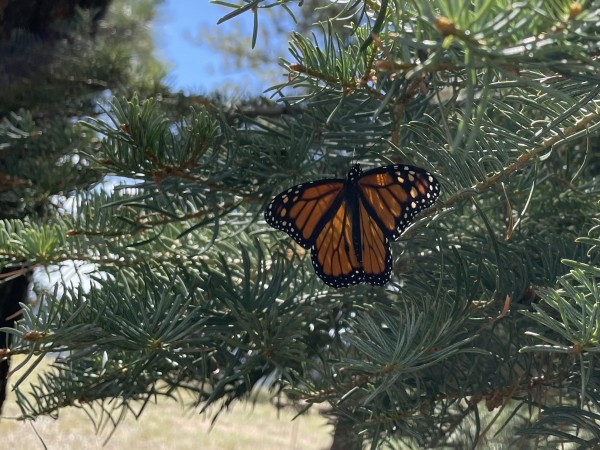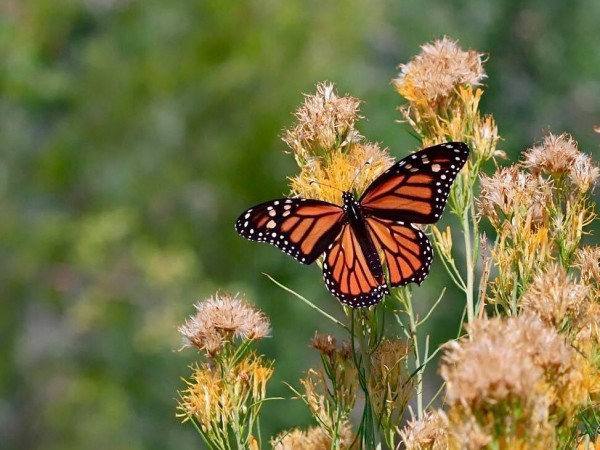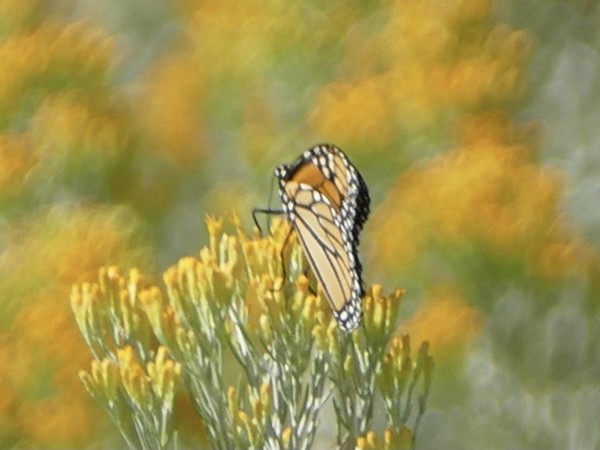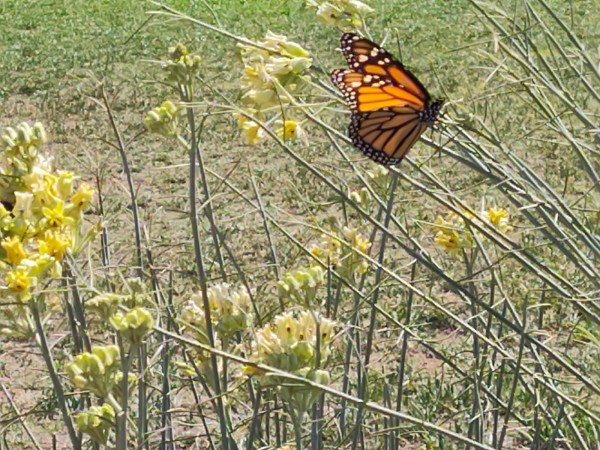Letter from Gail Morris: Western Monarch Fall 2021 Report #3
Published: 09/22/2021
Note: Observations highlighted in this report are from September 8–September 16. To explore more recent observations, check out "The Leading Edge" section of the news update and explore our maps.
Dear Western Monarch Friends,
The number of reports increased this week as monarchs continue to expand their range covering almost the entire West. Many places reported higher numbers of monarchs locally as well as freshly eclosed monarchs found Fall blooming perennials and annuals to relish to fuel their journey.
Monarch Sightings
Monarch sightings in the West stretched from Washington all the way through California, Arizona and New Mexico.
William reported a monarch on September 8 in Benton City, Washington. “The 2nd monarch I've seen this year. It landed on some showy milkweed in my yard. Wind at about 10mph. 10am temperature 85F.”
Monarchs moved into the greater Phoenix area this week for the first time this Fall. Claudia found one in her yard on September 11. “Female Monarch 9-11-21 5:45pm, in my Peoria, AZ pollinator garden. Seen initially on Desert Milkweed, nectared extensively on Vitex/Chaste tree. Sunny, temps in 96-97 range, no wind. Many Queens in the garden, this is the 1st Monarch of this season.”
Monarchs are more common this time of year on the South Rim of the Grand Canyon with its lower elevation. But Darryl found a monarch on the North Rim of the Grand Canyon on September 12. “Grand Canyon North Rim Monarch.”
Stewart spotted a monarch feeding on rabbitbrush at the Lower Hackberry Canyon Trailhead at the Grand Staircase - Escalante National Monument in Utah on September 12.
Janice in Penngrove, California spotted a monarch on September 14. “I have 3 kinds of milkweed in my yard but all have stopped blooming. The Monarch stayed near my red zinnias for about an hour. It has moved on.”
Rebecca in Tijeras, New Mexico, reported one monarch on September 14. “The Monarch was seen in a Rabbit Bush/Chamisa bush along highway 337 near Pine Flat Picnic Area.”
On September 16 Joseph found one monarch in Hendersen, Nevada. “One monarch butterfly visiting Asclepius subulata at the Walker elementary School garden.”
Report from the Field
I spent four mornings over the last two weeks walking the grassland meadows in full bloom in Southeastern Arizona. This year the summer monsoon season drenched the area with record rainfall at times overflowing ephemeral creeks and soothing the drought-stricken lands. The plants and insect populations exploded in response, and it was a delight to see clouds of multiple species of butterflies fill the skies. Monarch numbers were especially high here and it was easy to tag fresh and new monarchs each day.
Every morning began with monarchs packing the native Graham Thistles savoring their sweet nectar while getting tousled around as other monarchs or pollinators like the White-line Sphinx Moth joined their party. It made it easy to simply pick up a monarch gently with your fingers, tag them, and return them to a thistle to continue to pack more lipids for the migration journey ahead. You might wonder why we’re tagging in Southern Arizona in early September. We’ve learned monarchs here can migrate to Mexico or California from these fields with the earliest recovery tagged to date of September 1. So, we continue this quest to learn more in this unique and rich habitat. Here is a sample of just a few monarchs I experienced in the cienega. https://youtube.com/shorts/L0Z7jolaAao?feature=share
Get Ready!
Be sure to have fall blooming nectar available to feed monarchs on their long journey to the overwintering sites. Look now for key plots of migration nectar maturing to bloom and be ready to enjoy this spectacular event. Keep your camera or phone handy and take photos to report to Journey North.
Report your sightings!
Always report your monarch sightings in every life stage. Keep a camera in hand to document your findings. Include as much information as possible such as what the monarch was doing, feeding on, or any noteworthy find. Thank you for your support. Your contribution of data increases the understanding about monarchs.
Gail Morris is the Coordinator of the Southwest Monarch Study (www.swmonarchs.org), a Monarch Watch Conservation Specialist, and the Vice President of the Monarch Butterfly Fund and the Central Arizona Butterfly Association. The Western Monarch Population News is based on comments provided to Gail Morris. We hope to increase the number of sightings and therefore photos and comments entered into the Journey North. We rely on the volunteers who communicate regularly with Gail and who agree to participate in our effort to increase awareness of the population of western Monarchs. You can reach her at gail@swmonarchs.org.






